
Coarsegold, California
Revised 4-23-11
![]()
.jpg) NOTES
NOTES
Four-Leaved Allseed |
.jpg) NOTES
NOTES
Narrowleaf Cattail
|
.jpg)
Narrowleaf Cattail
|
|
.jpg) NOTES
NOTES
Bird's-Foot Fern |
.jpg)
Bird's-Foot Fern |
.jpg) NOTES
NOTES
Bracken Fern, Leaves |
.jpg)
Bracken Fern, Spores
|
.jpg) NOTES
NOTES
Nutsedge
|
.jpg)
Nutsedge
|
.jpg) NOTES
NOTES
Sorghum, Leaves |
.jpg)
Sorghum, Seeds |
.jpg) NOTES
NOTES
Tumbleweed (young plant) |
.jpg)
Unidentified, GB17 |
.jpg)
Foothill Ash, Leaves |
.jpg)
Foothill Ash, Bark |
.jpg) NOTES
NOTES
Foothill Ash
|
.jpg)
Foothill Ash, Seeds |
.jpg)
Unidentified Ash, Leaves |
.jpg)
Unidentified Ash, Bark
|
.jpg)
Unidentified
Ash
|
|
.jpg)
California Bay, Leaves |
.jpg)
California Bay, Bark |
.jpg) NOTES
NOTES
California Bay
|
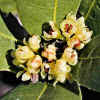
California Bay, Flowers |
.jpg)
Buckbrush, Leaves
|
.jpg)
Buckbrush, Bark
|
.jpg) NOTES
NOTES
Buckbrush |
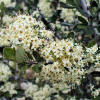 Buckbrush, Flowers |
.jpg)
California Buckeye, Leaves |
.jpg)
California Buckeye, Bark |
.jpg) NOTES
NOTES
California Buckeye |
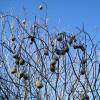 California Buckeye, in Fall
|
.jpg)
California Buckeye, Pod
|
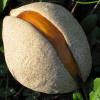 California Buckeye, Seed
|
||
.jpg)
Buttonbush, Leaves
|
.jpg)
Buttonbush, Flower |
.jpg) NOTES
NOTES
Buttonbush
|
.jpg)
Buttonbush,
Seeds
|
.jpg)
Fremont Cottonwood, Leaves |
.jpg)
Fremont Cottonwood, Bark |
.jpg) NOTES
NOTES
Fremont
Cottonwood
|
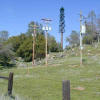 NOTES
NOTES
Cell Tree
|
.jpg)
Deerbrush, Leaves
|
.jpg)
Deerbrush, Bark |
.jpg) NOTES
NOTES
Deerbrush
|
.jpg)
Deerbrush, Flowers |
.jpg)
Blue Elderberry, Leaves |
.jpg)
Blue Elderberry, Bark |
.jpg) NOTES
NOTES
Blue Elderberry
|
.jpg)
Blue Elderberry, Berries |
.jpg)
Whiteleaf Manzanita,
|
.jpg)
Whiteleaf Manzanita,
|
.jpg) NOTES
NOTES
Whiteleaf Manzanita
|
Whiteleaf Manzanita, Berries |
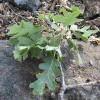
California Black Oak, |
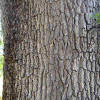
California Black Oak, |
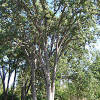 NOTES
NOTES
California Black Oak |
|
.jpg)
Blue Oak, Leaves
|
.jpg)
Blue Oak, Bark
|
.jpg) NOTES
NOTES
Blue Oak
|
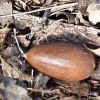
Blue Oak, Acorn |
.jpg)
Sierra Live Oak, Leaves |
.jpg)
Sierra Live Oak, Bark
|
.jpg) NOTES
NOTES
Sierra Live Oak
|
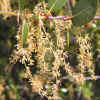
Sierra Live Oak, Flowers |
.jpg)
Poison Oak, Leaves |
.jpg)
Poison Oak, Fall Leaves |
.jpg) NOTES
NOTES
Poison Oak
|
 Poison Oak, Flowers |
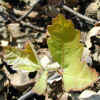
Valley Oak, Leaves |
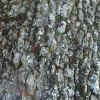
Valley Oak, Bark |
Valley Oak |

Valley Oak, Acorn |
.jpg)
Digger Pine, Needles
|
.jpg)
Digger Pine, Bark |
.jpg) NOTES
NOTES
Digger Pine
|
.jpg)
Digger Pine, Cone |
.jpg)
Hollyleaf Redberry, Leaves |
.jpg)
Hollyleaf Redberry, Bark
|
.jpg) NOTES
NOTES
Hollyleaf Redberry
|
.jpg)
Hollyleaf Redberry, Berries
|

Western Redbud, Leaves |
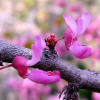
Western Redbud, Bark and Flowers |
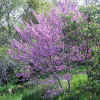 NOTES
NOTES
Western Redbud |
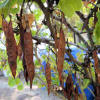 Western Redbud, Seeds |
.jpg)
Squawbush, Leaves |
.jpg)
Squawbush, Flowers |
.jpg) NOTES
NOTES
Squawbush |
.jpg)
Squawbush, Berries |
.jpg)
Arroyo Willow, Leaves |
.jpg)
Arroyo Willow, Bark |
.jpg) NOTES
NOTES
Arroyo Willow |
|
.jpg)
Pacific Willow, Leaves |
.jpg)
Pacific Willow, Bark |
.jpg) NOTES
NOTES
Pacific Willow
|
.jpg)
Pacific Willow, Catkin |
.jpg) NOTES
NOTES
Himalayan
Blackberry
|
.jpg) NOTES
NOTES
California
Buckwheat
|
.jpg) NOTES
NOTES
Shrubby Butterweed
|
.jpg) NOTES
NOTES
Sticky Chinese Houses
|
.jpg) NOTES
NOTES
Clammy
Clover
|
.jpg) NOTES
NOTES
Cocklebur |
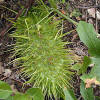 NOTES NOTES
Wild Cucumber |
|
.jpg) NOTES
NOTES
Curly Dock, Fresh Seeds
|
.jpg)
Curly Dock, Ripe Seeds |
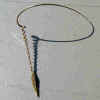
Filaree, Seed |
.jpg)
Oak
Galls
|
.jpg) NOTES
NOTES
Hedge-Parsley
|
.jpg) NOTES
NOTES
Chaparral Honeysuckle
|
.jpg) NOTES
NOTES
Lacepod
|
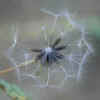 NOTES
NOTES
Prickly Lettuce |
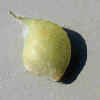
Whorled Lupine |
.jpg) NOTES
NOTES
Woolly Milkweed
|
.jpg) NOTES NOTES
Hall's Mule Ears
|
.jpg) NOTES
NOTES
Large Water Plantain
|
.jpg) NOTES
NOTES
Rattlesnake Weed
|
.jpg)
Hollyleaf Redberry
|
 Western Redbud |
.jpg) NOTES
NOTES
Common Senecio
|
.jpg) NOTES
NOTES
Silver Puffs |
.jpg) NOTES
NOTES
Tocolote
|
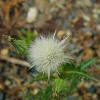 NOTES
NOTES
Spiny
Sowthistle
|
.jpg) NOTES
NOTES
Sunflower
|
.jpg) NOTES
NOTES
California Thistle
|
.jpg) NOTES
NOTES
Canada Thistle
|
.jpg)
Tumbleweed |
|
.jpg)
Unidentified, GB24 |
.jpg)
Unidentified, GB25
|
|
Bermuda
Grass
|
.jpg)
Bermuda Grass, Seed |
Brome Grass 1 |
.jpg) NOTES
NOTES
Brome Grass 2 |
.jpg) NOTES
NOTES
Rabbitsfoot Grass |
.jpg)
Rabbitsfoot Grass |
.jpg) NOTES
NOTES
Italian Rye Grass
|
.jpg)
Italian Rye Grass
|
.jpg) NOTES
NOTES
Shiver Grass
|
.jpg)
Shiver Grass
|
.jpg) NOTES
NOTES
Wild Oats |
.jpg)
Wild Oats
|
.jpg)
Unidentified Grass, GB07
|
.jpg)
Unidentified
Grass, GB19
|
.jpg)
Unidentified Grass, GB19 |
|
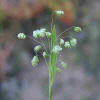
Unidentified Grass,
GB20 |
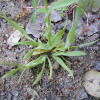 Unidentified Grass, GB20 |
.jpg)
Mushroom, GB13 |
.jpg)
Mushroom, GB14 |
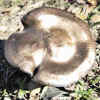
Mushroom, GB15 |
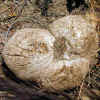
Mushroom, GB16 |
.jpg)
Brown Lichen, GB09
|
.jpg)
Gray Lichen, GB10
|
.jpg)
Gray Lichen, GB21
|
.jpg)
Green Lichen, GB20 |
.jpg)
Green Lichen on Quartz, GB11 |
.jpg)
Green Lichen, GB12 |
.jpg)
Orange Lichen, GB22 |
Bloom:
Late
Winter–Early Spring
Description:
Evergreen
tree, 40–80'. Bark is green to reddish brown. Leaves
are
2–5", shiny dark green above, paler and dull
below. Berries are greenish-purple, up to 1", enclosing a
large brown seed. Habitat is
canyons.
Special:
Native. All parts are
aromatic. Fruits eaten by birds and small animals. California natives used the saplings for bows, and ground
the nuts into meal for small cakes. Tea was made from the
leaves to cure stomach ailments and headaches. Today, we use
the leaves as flavoring for soups and stews. The wood is
prized for furniture, paneling, and woodenware.
BACK
Bloom:
May–July
Description:
Deciduous,
sprawling shrub with yellow honeysuckle flowers. It has
edible but bitter berries. Hummingbirds like the flowers.
Special:
Native.
BACK
Bloom:
March–June
Description:
Annual herb, 4–20". Leaves are rough, pinnately lobed. Stem is filled with milky
sap. Yellow disk flowers emerge slightly above long, green phyllaries, which are
pointed & black-tipped. When the flowers go to seed, they have dandelionlike
parachutes.
Special:
Not native. Common weed in our park.
BACK
Description:
40–70' or more. Needles are 3 to a bundle, pale
gray-green, 8–12", but sparse (early pioneers described it
as "the tree that you can see through"). The trunk is forked, and often leans. On slopes, it often grows at a right angle. Roots are deep,
and this pine can grow in poor, rocky soil. The bark is dark
gray and furrowed with age, but smooth on branches.
Special:
The wood is not durable;
used only for fuel. Cones are large (6–10") and
heavy,
maturing in 2 years, and after opening, may remain on tree
for years. Birds and small animals eat the sweet seeds. The
name Digger comes from a term for native peoples who dug up
roots for food and harvested large quantities of these
seeds.
BACK
Bloom:
June–August
Description:
Coarse perennial
herb, 1–2'. Large, toothed yellow ray flowers surrounding
yellow disk flowers. Leaves large, grayish, and fuzzy,
slightly serrated.
Special: Native, limited to
California. Seeds
edible, tasting like sunflower seeds. Some Native Americans
used the roots as medicine for sores, burns, and rheumatism.
BACK
Description:
Wetland plant. Leaves stiff, swordlike,
from the base. This species is smaller than Common Cattail,
with the lighter colored male flowers separated on the stalk
from the dark female flowers.
Special:
Native. Cattails have many uses. In fall &
winter, the starchy rhizomes can be peeled and cooked like
potatoes, or dried and ground into flour. Dormant sprouts
growing from the rhizomes can be steamed (known as Russian
asparagus). In spring and early summer, young shoots can be
eaten raw or cooked. Immature flower spikes can be boiled
and eaten like miniature ears of corn. The pollen of the
male flowers can be used as flour with no grinding
necessary. Leaves can be woven into mats, baskets, roofs,
etc. The fluffy "fruits" can be used as pillow
stuffing and diaper material, among other things.
BACK
Bloom:
April–September
Description:
1–3'. Yellow flowers 1¼", rays not overlapping, in branched clusters. Bluish-green leaves 1–5", divided into very narrow lobes; upper leaves
often simply quite narrow.
Special:
Native. One of the most toxic range plants to livestock, particularly new growth. Once
used medicinally by natives.
BACK
Bloom: May–July
Description: Annual herb, 4"–2'.
Single 70- to 100-flowered heads. Seed heads are white, 5-petal
star shape.
Special: Native.
BACK
Bloom:
June–September
Description:
Annual herb, 1–3'. Coarse plants with bright yellow flower heads ½–2". Numerous
arrow-shaped leaves clasp stem & are spiny toothed.
Special:
Not native; invasive. Seeds have parachutes
of soft cottony hairs, & birds are fond of them.
BACK
Bloom:
June–September
Description:
Annual herb, 2–13'. Hairy
stems commonly branched in the upper half. Lower leaves
ovate, often heart-shaped, usually with irregular teeth;
upper leaves smaller & narrower. Flower heads
3–5", central maroon disk surrounded by many bright
yellow rays.
Special:
Native. Heads follow the sun
(Spanish name means "looks at the sun."). Yellow
dye
from flowers and black or dull-blue dye from seeds were once
important in native basketry & weaving.
BACK
Bloom: May–January
Description: Annual herb,
1–5'. Yellow flower heads (½–¾"), with long spines (¾")
below. Cottony-haired leaves linear, extending down the
stem. Well branched.
Special: Not native;
invasive. Very similar to Yellow Star Thistle.
BACK
Description: Annual herb.
Special: Not native; invasive. BACK
Description: Tree, 40–100'. Largest of the
western deciduous oaks. Short stout trunk, 3–4' diameter; large,
widely spreading branches that may droop to the ground. Branches sometimes grow into loops and knots.
Leaves elliptical, deeply 7- to 11-lobed, dark green &
nearly hairless above, paler & finely hairy beneath.
Bark is light gray or brown, deeply furrowed & broken
horizontally into thick plates. Prefers rich loam
soils.
Special: Native. Acorns (1½–2¼" are consumed by wildlife,
and formerly by California Indians. Photographed at
Oak Creek. BACK
Bloom: Spring
Description: Large shrub or
small tree to 16', 4" diameter. Long-stalked leaves are nearly round
(1½–3½"), dark green
above, paler below. Bark gray, smooth, becoming
fissured. Flowers (½") are pealike, purplish-pink in
clusters of 2–5, appearing before the leaves. Purple
or brown pods (2-3–½") mature in late summer & split along
one edge. They hang in clusters,
revealing beanlike seeds.
Special: Native. Indians made bows from the
wood. Deer like the foliage. BACK
Description:
2–3', occasionally up to 6'. Annual. Seeds hang from
panicles.
Special: Not native; invasive. Very plentiful throughout the country,
especially the west. Wildlife freely eat the seeds.
BACK
Bloom:
May–June
Description:
Perennial herb, ½–2'. Flowers pale yellow with white "pegs"
in center. Long, oblong leaves in opposite pairs. Leaves
and stems are white woolly-haired.
Special: Native; limited to
California. Can cause minor dermatitis.
BACK